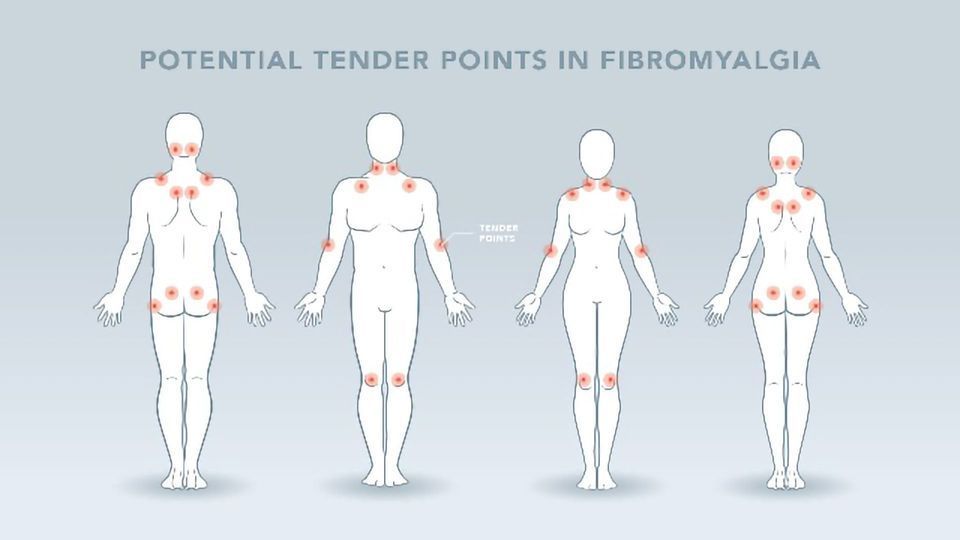Fibromyalgia vs. General Muscle Pain: How to Know the Difference
Muscle pain is a common symptom that affects millions worldwide, but not all muscle pain is the same. While general muscle pain can result from everyday activities, exercise, or minor injuries, fibromyalgia is a chronic disorder characterized by widespread musculoskeletal pain accompanied by fatigue, sleep disturbances, and cognitive difficulties. Understanding the differences between fibromyalgia and general muscle pain is essential for accurate diagnosis, effective treatment, and improved quality of life. In this article, we will explore the key distinctions between fibromyalgia and general muscle pain, their causes, symptoms, and treatment options.
What Is General Muscle Pain?
General muscle pain, also known as myalgia, is a common experience that can arise from various causes, often related to muscle strain, injury, or overuse.
Common Causes of General Muscle Pain
- Muscle Strain or Overuse: Excessive physical activity or improper exercise technique.
- Injury: Sprains, tears, or bruises.
- Stress and Tension: Emotional stress causing muscle tightness.
- Infections: Viral or bacterial infections that cause muscle aches.
- Dehydration or Electrolyte Imbalance: Leading to cramps and discomfort.
Symptoms of General Muscle Pain
- Localized pain or tenderness
- Stiffness and reduced range of motion
- Muscle cramps or spasms
- Improvement with rest and recovery
What Is Fibromyalgia?
Fibromyalgia is a chronic condition characterized by widespread pain affecting muscles, ligaments, and tendons, often accompanied by other symptoms that significantly impact daily functioning.
Causes and Risk Factors of Fibromyalgia
The exact cause of fibromyalgia remains unknown, but it is believed to involve abnormal pain processing in the central nervous system. Several factors may contribute, including:
- Genetic predisposition
- Physical or emotional trauma
- Infections or illnesses
- Stress and anxiety
Key Symptoms of Fibromyalgia
- Widespread musculoskeletal pain lasting more than three months
- Fatigue and sleep disturbances
- Cognitive difficulties, often called “fibro fog”
- Headaches and migraines
- Heightened sensitivity to pain
- Stiffness, numbness, or tingling in limbs
Fibromyalgia vs. General Muscle Pain: Key Differences
1. Pain Location and Duration
General Muscle Pain: Typically localized to specific muscles or groups and usually temporary, lasting a few days to weeks depending on the cause.
Fibromyalgia: Characterized by widespread pain that affects both sides of the body, above and below the waist, persisting for at least three months.

2. Associated Symptoms
General Muscle Pain: Mostly limited to physical discomfort with occasional stiffness or cramps.
Fibromyalgia: Includes a range of symptoms beyond pain such as chronic fatigue, sleep problems, cognitive impairment, and mood disorders.
3. Response to Treatment
General Muscle Pain: Often resolves with rest, ice or heat therapy, over-the-counter pain relievers, and physical therapy.
Fibromyalgia: Requires a comprehensive treatment approach including medication, lifestyle changes, stress management, and sometimes mental health support.
How Is Fibromyalgia Diagnosed?
Diagnosing fibromyalgia can be challenging because its symptoms overlap with many other conditions. There is no single test for fibromyalgia, so doctors rely on clinical evaluation and exclusion of other diseases.
Diagnostic Criteria
- Widespread pain index (WPI) and symptom severity scale (SSS) scores
- Symptoms present for at least three months
- Absence of other disorders that could explain the pain
Tests to Rule Out Other Conditions
Blood tests and imaging may be performed to exclude rheumatoid arthritis, lupus, thyroid disorders, or other causes of muscle pain.
Treatment Options for Fibromyalgia and General Muscle Pain
Treating General Muscle Pain
- Rest and activity modification
- Over-the-counter pain relievers (ibuprofen, acetaminophen)
- Physical therapy and stretching exercises
- Hydration and nutrition
- Massage therapy and heat/ice packs
Treating Fibromyalgia
- Medications: antidepressants, anticonvulsants, and pain relievers prescribed by a doctor
- Exercise: low-impact aerobic activities like swimming or walking
- Cognitive-behavioral therapy (CBT) to manage stress and improve coping skills
- Sleep management techniques
- Complementary therapies: acupuncture, yoga, meditation
When to See a Doctor
If you experience persistent muscle pain that doesn’t improve with rest or basic treatments, or if you notice widespread pain accompanied by fatigue, sleep issues, or cognitive problems, it’s important to seek medical advice. Early diagnosis and proper management can improve your quality of life.
Conclusion
While general muscle pain and fibromyalgia both involve muscle discomfort, their causes, symptoms, and treatment approaches differ significantly. Understanding these differences can help you identify when muscle pain may be part of a chronic condition like fibromyalgia, rather than a temporary issue. If in doubt, consult a healthcare professional to receive an accurate diagnosis and personalized treatment plan tailored to your needs.


